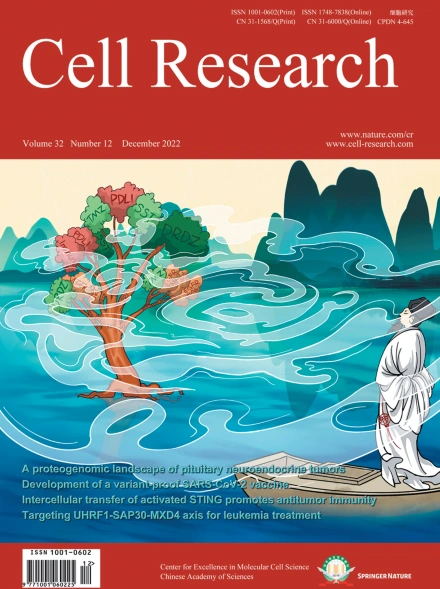
Advanced Search
Submit Manuscript
Advanced Search
Submit Manuscript
Volume 32, No 12, Dec 2022
ISSN: 1001-0602
EISSN: 1748-7838 2018
impact factor 17.848*
(Clarivate Analytics, 2019)
Volume 32 Issue 12, December 2022: 1128-1131
Cryo-EM structure of the type III-E CRISPR-Cas effector gRAMP in complex with TPR-CHAT
Shuo Wang1,† , Minghui Guo1,† , Yuwei Zhu1,† , Zhiying Lin1 , Zhiwei Huang1,2,*
1HIT Center for Life Sciences, School of Life Science and Technology, Harbin Institute of Technology, Harbin, Heilongjiang, ChinaDear Editor,
Prokaryotes and viruses have been engaged in an evolutionary struggle for billions of years.1 Bacteria and archaea employ clustered regularly interspaced short palindromic repeats (CRISPR)-CRISPR-associated (Cas) adaptive immune systems to protect against viral infection.2 The CRISPR-Cas locus consists of two parts: CRISPR and Cas genes. According to the latest phylogenetic classification, the CRISPR-Cas system can be divided into two classes, which can be further subdivided into six types.3 Class 1 CRISPR-Cas systems are characterized by a multiprotein effector, and consist of type I, III, and IV CRISPR-Cas systems. Class 2 CRISPR-Cas systems feature a single nuclease protein, and consist of type II, V, and VI CRISPR-Cas systems. The type II Cas9 and type V Cas12 systems have been engineered as genome editing tools, and they have been successfully applied in a broad range of organisms.4,5 Compared to Cas9, the type VI Cas13 system exhibits RNA-guided RNase activity and the property of nonspecific cutting.6 Recently, a new subtype of CRISPR-Cas, type III-E,3 has been identified and named gRAMP7 or Cas7-11.8 Unlike the traditional effectors of the type III CRISPR-Cas system, gRAMP is a single effector protein with four Cas7 proteins and one Cas11 protein fused together. Given its unique architecture and specific cleavage activity, gRAMP is expected to be engineered as a powerful RNA editing tool.8 Interestingly, a gene encoding the caspase-like peptidase TPR-CHAT often co-occurs with gRAMP gene clusters.3 TPR-CHAT interacts directly with gRAMP,
https://doi.org/10.1038/s41422-022-00738-3